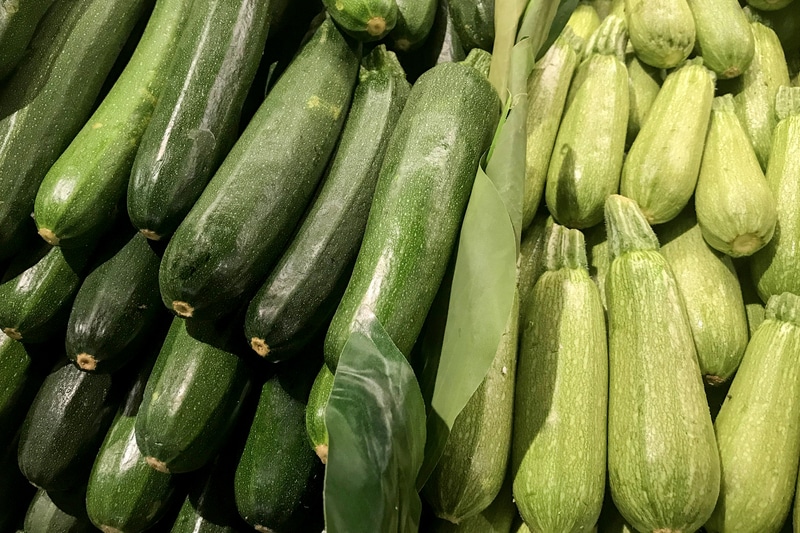
The squash family is extremely extensive and there are different types of squashes that are available throughout the year. However, the summer squash varieties are the most delicious, and gray squash and zucchini are two of them. Both of them are summer squashes but there are significant differences between the flavor, texture, and appearance. So, with this article, we are sharing the differences between the two!
Gray Squash vs Zucchini
Gray Squash
Gray squash is also known as Middle Eastern squash or Mexican grey squash. It is basically a summer squash but it tends to be stockier. It has a rounded end as well as shiny, smooth, and pale green skin. In addition, the skin has a pale green or mint green appearance. In most cases, the shade varies from light to darkish greens with light spots. The flesh of gray squash is crisp and solid while the taste is pretty mild. It has to be harvested in the early phase, particularly when the squash is five to seven inches long.
The experts recommend that you harvest the gray squash before the seeds start forming. The gray squash can be used as the green one. To begin with, you can sauté them with fresh herbs, garlic, and onions. The second option is to stir-fry them with some summer veggies like bell pepper and flavor them with salt and pepper. Another option is to grill the gray squash with salt and pepper and olive oil. Many people don’t know this but gray squash can be sliced and fried to make paste sauce or you can bake it into a gratin.
As far as the culinary uses are concerned, you can grate the gray squash and add it to omelets, bread, pancakes, and muffins. In addition, you can slice the squash in a thin form to make the flatbread or pizza topping. Even more, it can be used in green salads in raw as well as pickled forms, whatever you prefer. When you have to purchase gray squash, it’s recommended that you look for firm veggies with smooth and shiny skin (there must be no blemishes on the zucchini).
The gray squash is readily available between May and October. If you are a fan of Mexican cuisine, you can cut the gray squash lengthwise and brush them with olive oil and sprinkle them with ground black pepper and salt to grill them. Grilling the squash will make brown and rich char marks, which are tender to eat and can be prepared in less than five minutes.
Zucchini
Zucchini is another summer squash that’s known for its rich feel and texture. It has a slightly sweet and bitter flavor but the overall flavor is pretty mild. The zucchini should be cooked to achieve a sweeter flavor and clear out the bitter tones. In addition, cooking the zucchini results in a softer texture, even though it’s tender to bite in raw form. Zucchini is known to have dark green and firm outer skin, which has a bit of crunch as well.
As far as the inner flesh is concerned, it has a softer texture and a light color – the color is usually pale yellow. The zucchini’s skin has a rather earthy and grassy flavor because the flesh has the most flavor. The flesh has a slightly sweet flavor but the flavor becomes more pronounced when it is cooked. On the other hand, when the zucchini becomes overripe, it turns bitter. It wouldn’t be wrong to say that zucchini has a green and fresh flavor.
In most cases, the zucchini is sautéed in oil or butter to crisp up the exterior but the flesh remains tender. In addition, it can be roasted in the oven or you can char the zucchini slices on the grill with your favorite seasoning to add flavor and improve the texture. The best thing about these cooking and preparation methods is that they help improve the natural flavors of the zucchini and it’s recommended that you add some herbs, spices, or seasonings to diversify its flavor.
As far as purchasing the zucchini is concerned, it is recommended that you opt for slender and firm zucchini, particularly the pieces that have a bright green hue. In addition, the zucchini should not have any soft spots or wrinkled skin. For this reason, it’s best that you purchase zucchini has six to eight inches long and the diameter should not be more than two inches.